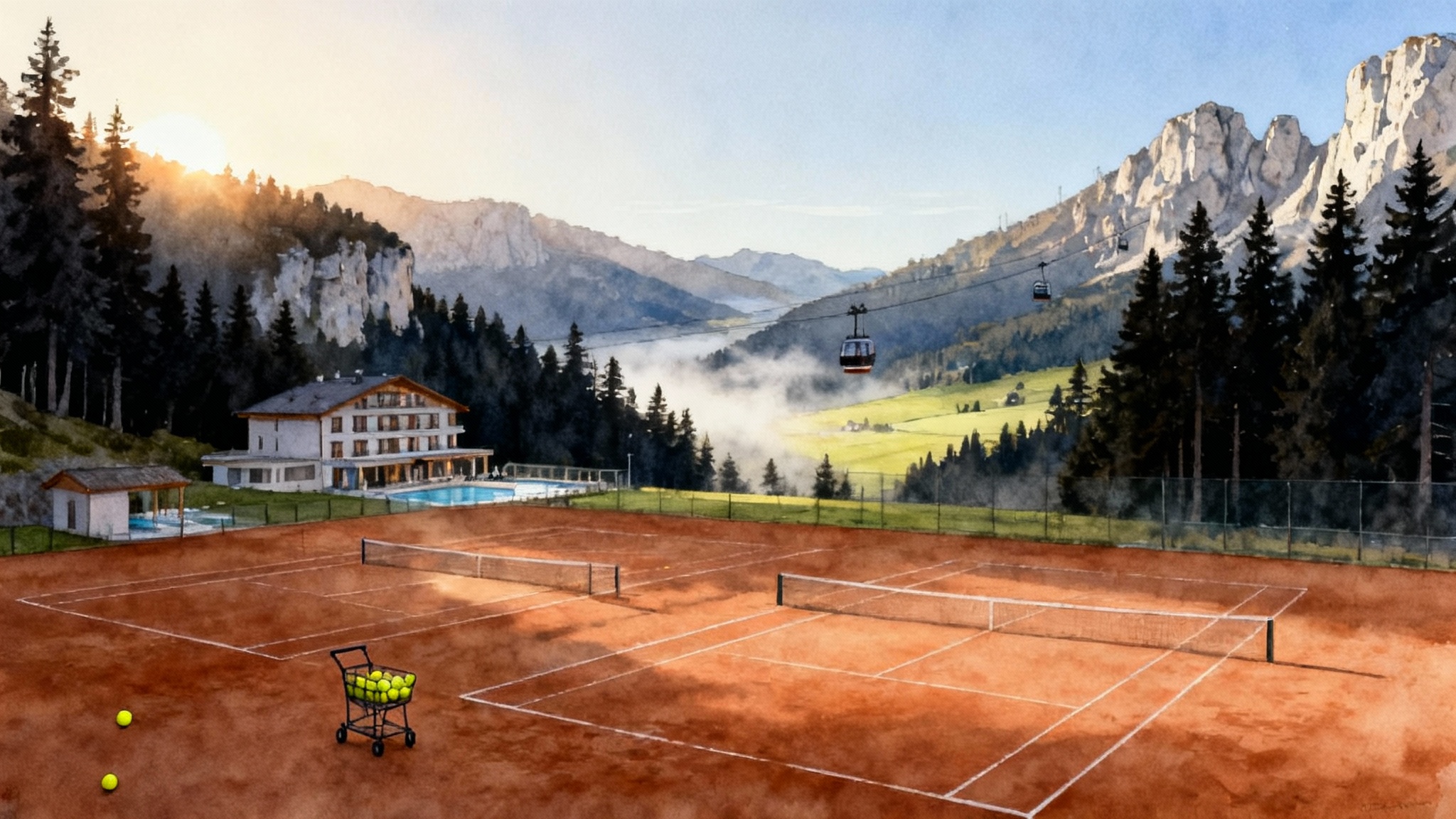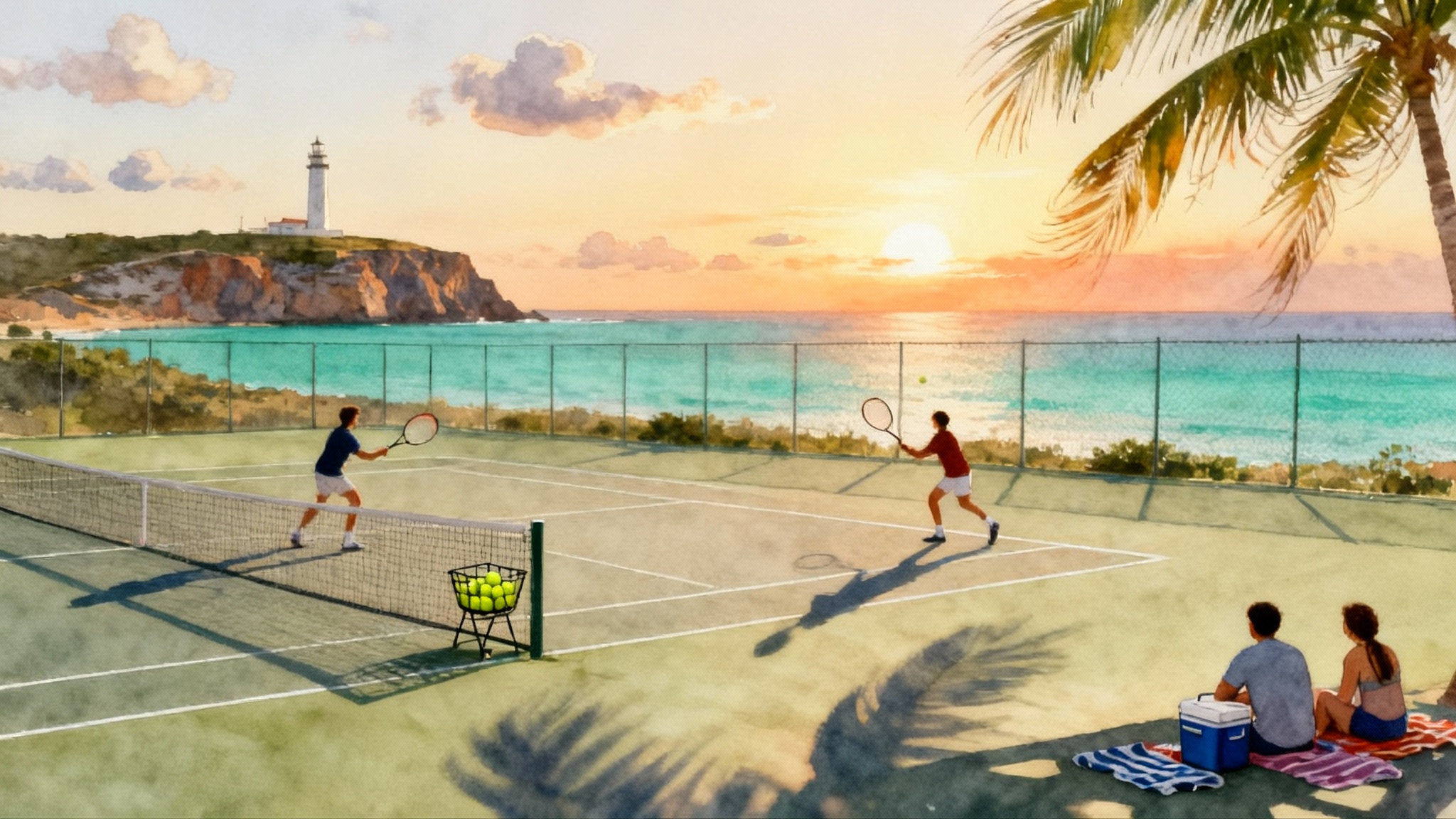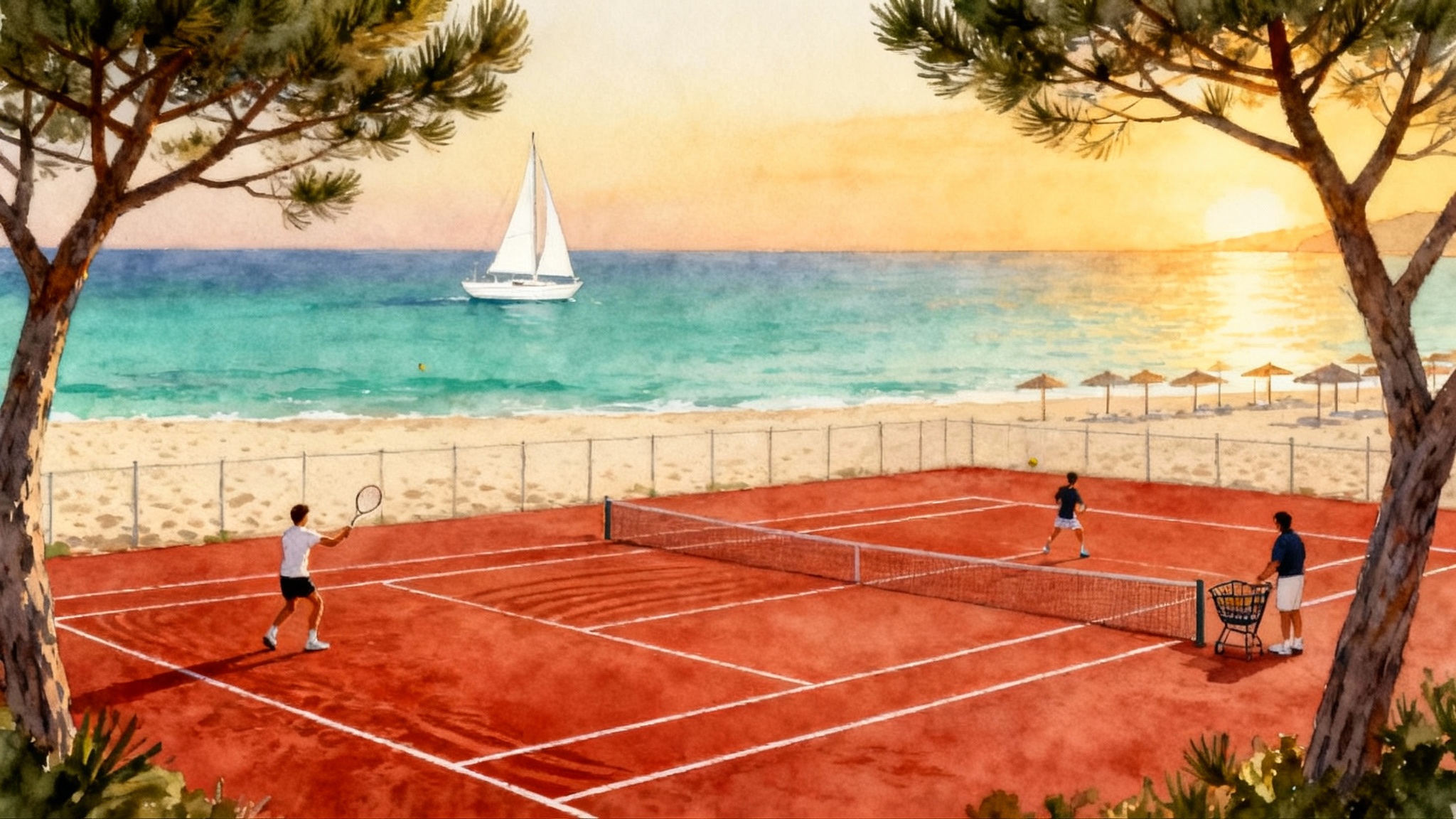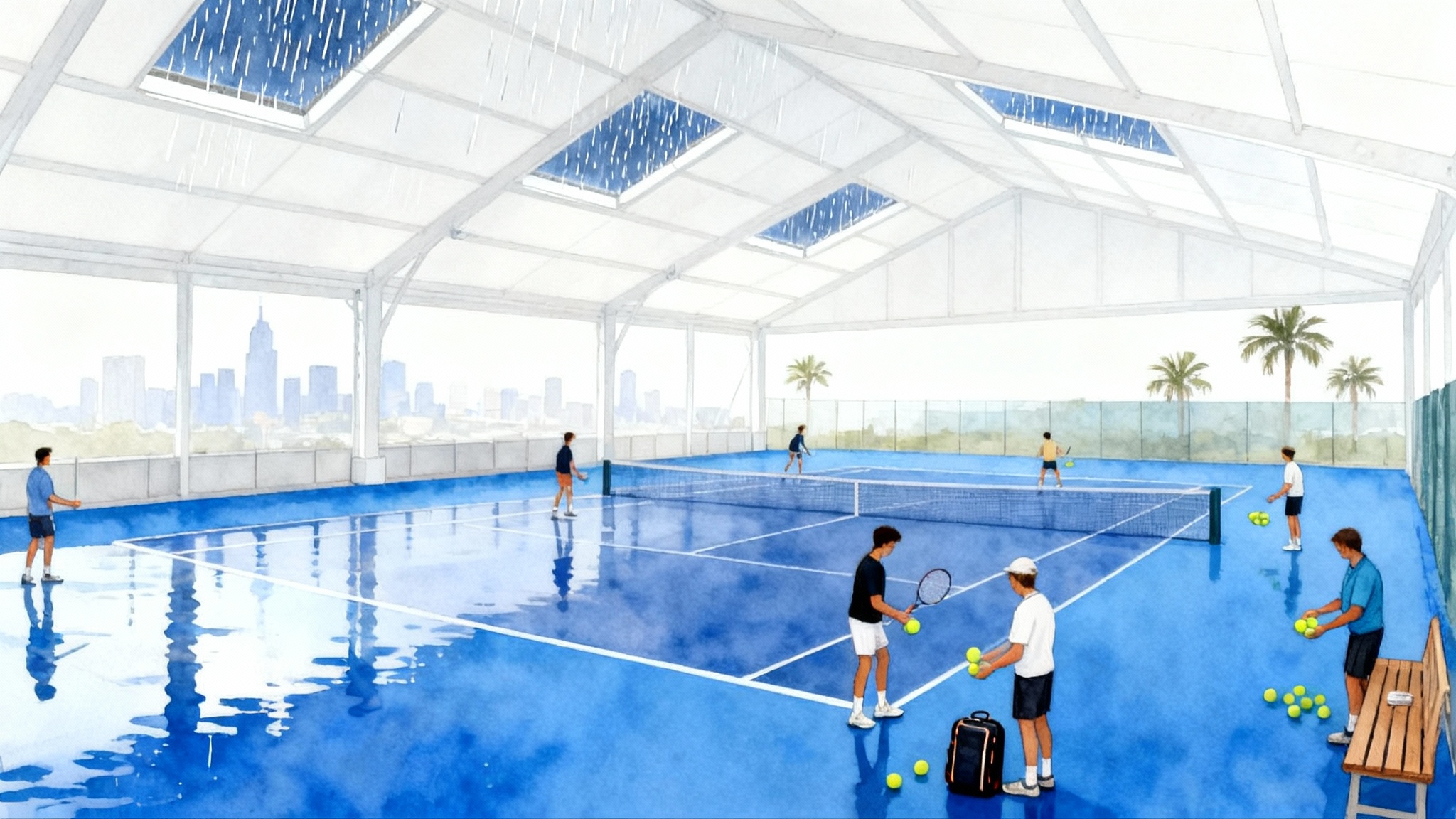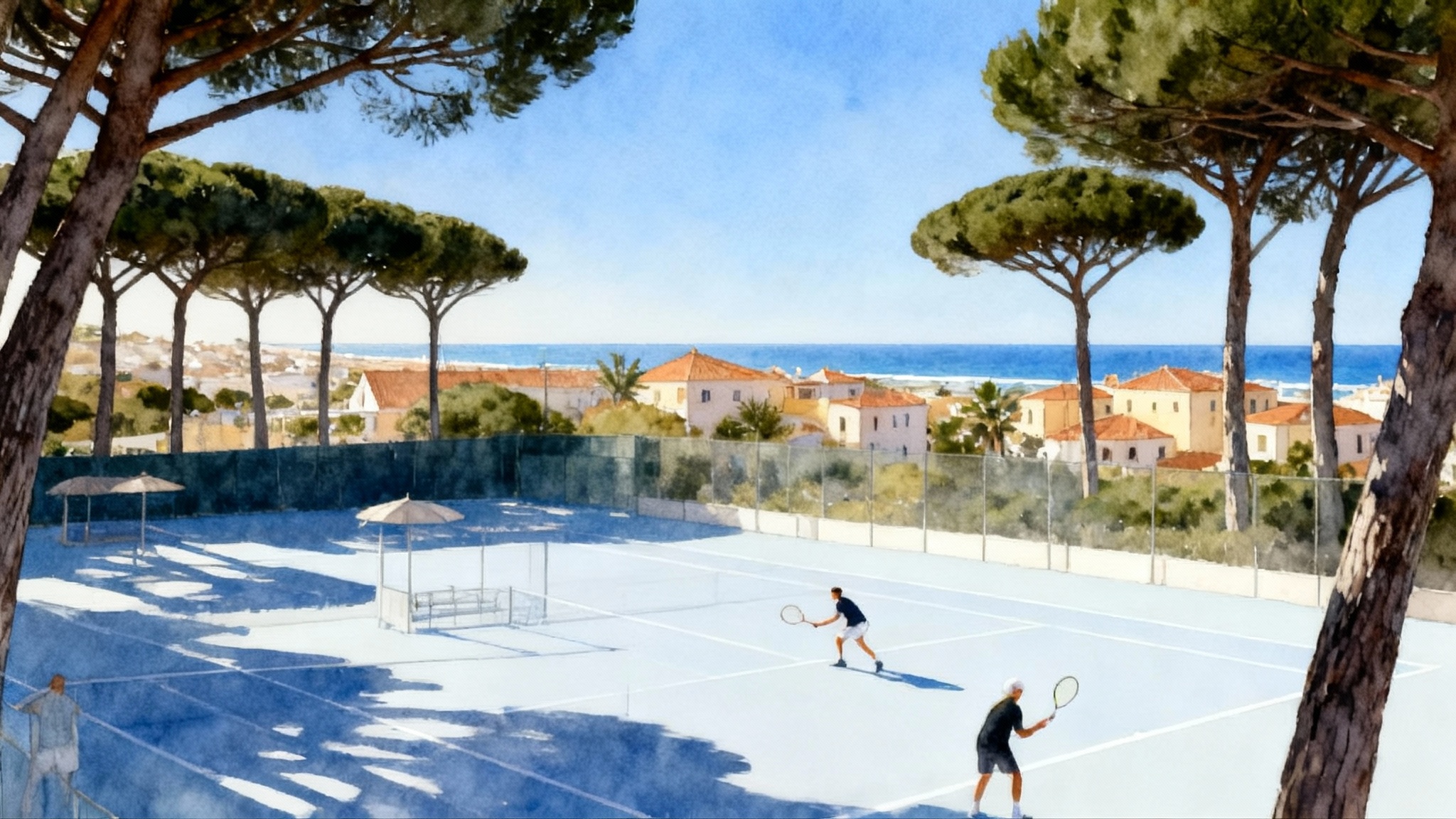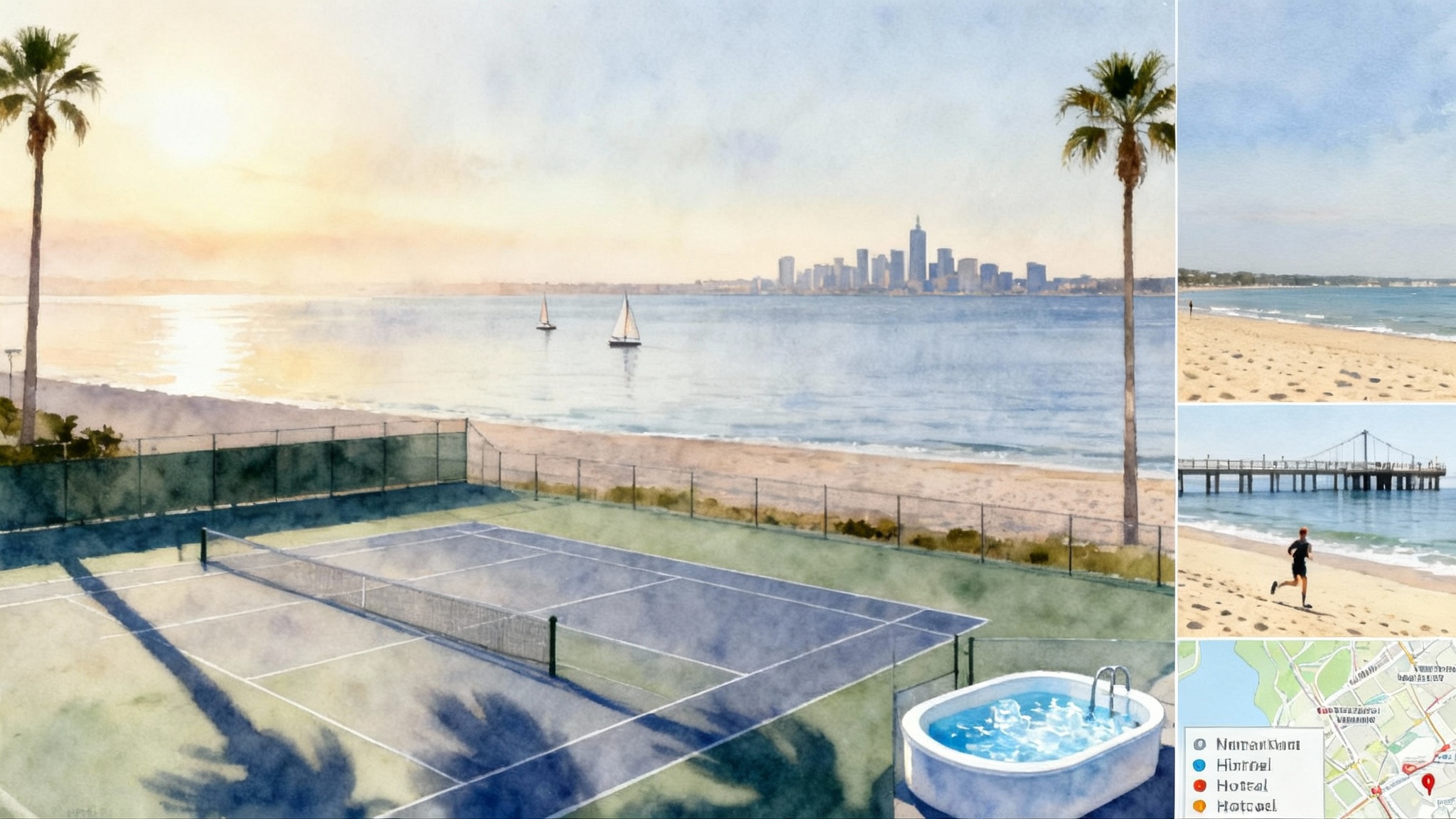North Texas Winter Tennis 2025–26: DFW’s Reliable Outdoor Base

Why Dallas-Fort Worth works from November to March
If you want real outdoor court time between Thanksgiving and early spring, three factors have to line up. First, tolerable winter weather that does not cancel your plan every other day. Second, a tournament calendar dense enough to convert practice into verified results. Third, predictable travel in and out for players, parents, and coaches. Dallas-Fort Worth checks those boxes in a way that is both practical and repeatable.
North Texas winters are cool in the mornings and generally comfortable after lunch. Cold snaps happen, but they tend to be short. When a front moves through, courts dry quickly and the schedule returns to normal within a day or two. That is the heart of the value here. You can stack training days with confidence, build toward a weekend event, and rarely watch an entire week disappear to rain. The sun angle is friendly, the wind varies, and you get a different kind of practice stimulus than in humid coastal markets. That mix helps players sharpen timing, footwork, and point patterns without spending half their time under a roof.
The logistics edge: fly in, play, fly out
Dallas-Fort Worth International is one of the most connected airports in the country. Direct flights reach most major American cities multiple times per day, and schedules hold up well in winter because the airport is built for year round operations. Dallas Love Field expands the low cost options. The net effect is simple. Coaches can commute in for a camp week, parents can split travel duties, and players can book in and out without a maze of connections. When you plan a four or six week block, this reliability makes a difference. You can give yourself a weather buffer without burning vacation days.
Driving inside the metroplex feels familiar for anyone who has trained in a large American city. Distances are real, but freeway access is straightforward and most training hubs sit close to restaurants, grocers, and recovery options. If you are stacking weekend tournaments, the interstates out of Dallas make Waco, Austin, and Oklahoma City feel remarkably reachable.
Court access that fits a working plan
Dallas-Fort Worth has a deep inventory of public hard courts, plus many private clubs that offer day passes, drop in clinics, and guest policies for out of town players. The practical benefit is flexibility. You can mix academy sessions with additional hitting or serve work later in the day without running into a wall of fully booked courts. Many municipalities allow advance reservations, and coaches in the area are used to placing out of town athletes. If a cold morning arrives, push the session to midday. If a sunny window opens, add a half hour of returns before dinner. You can assemble a productive day without heroic logistics.
Indoor backup is available in select clubs across the metro area, often as covered or climate protected courts rather than full dome complexes. You will not need them often, and that is exactly the point of choosing North Texas.
How DFW stacks up to Florida and Southern California
- Florida: Daily highs often run warmer, but winter fronts bring extended rain and sticky humidity that can linger. Courts can stay damp into the afternoon. Tournament density is excellent, yet court access gets tight during peak snowbird season and resort rates climb. If you get a wet weekend in Florida, the entire competitive plan can slide by seven days.
- Southern California: Winter is generally dry and mild. Morning marine layers and afternoon wind can be sneaky, and municipal reservations can be strict in high demand neighborhoods. The time you lose is not from rainfall but from traffic and cross town drives. That adds cost and fatigue to a multi week block, especially if you chase events across the basin. For a coastal, year round option, see our Newport Beach year-round base guide.
- Dallas-Fort Worth: Cooler mornings than Florida and Southern California but plenty of bright, playable afternoons. Showers are usually brief. Court supply is deep. Drive times are predictable. Hotel and car rates are often lower than coastal hubs. Your training rhythm rarely breaks, which is what matters most in a short seasonal window.
Two training tracks that work right now
Below are sample week frameworks for November 2025 through March 2026. Adjust the volume to your age, level, and match load.
Junior performance track
Best for United Tennis Rating players in the 6 to 10 band or United States Tennis Association levels that translate to competitive sectional play.
- Monday
- 9:00 a.m. Warm up run, dynamic mobility, short on court activation
- 9:30 a.m. Technical block: serve plus first ball, video check on toss and contact
- 11:00 a.m. Pattern play: backhand cross to inside out forehand, plus first strike from deuce
- 12:30 p.m. Lunch, school block or tutoring
- 3:00 p.m. Academy session: point construction and live ball drills
- 5:00 p.m. Conditioning: footwork ladders, resisted sprints, core
- Tuesday
- 9:00 a.m. Return plus second ball, situational tie breaks
- 3:00 p.m. Academy session: heavy cross rallies then direction change
- 5:15 p.m. Mobility and shoulder care
- Wednesday
- 9:00 a.m. Live sets with rotating partners
- 12:30 p.m. Recovery, school block
- 3:00 p.m. Contrast session: short court, volleys, transition, overheads
- Thursday
- 9:00 a.m. Serve plus plus: targets, speed ladder, second serve under pressure
- 3:00 p.m. Academy session: score based games to 11 with serve restrictions
- Friday
- 9:00 a.m. Match play rehearsal: two out of three sets with coaching changeovers
- Afternoon off or light hit
- Weekend
- Saturday to Sunday tournament play in Dallas, Waco, Austin, or Oklahoma City depending on entries. If no event, schedule verified match play and a single fitness session.
Adult competitor track
Best for National Tennis Rating Program 4.0 to 5.0 players who want a winter bump without a giant bill.
- Monday
- 7:00 a.m. Group clinic: footwork and first strike
- 12:30 p.m. Solo basket: serves and returns
- 6:00 p.m. Doubles live games
- Tuesday
- 7:00 a.m. Private lesson: target an issue such as forehand height management
- 5:30 p.m. Strength session, then easy mobility
- Wednesday
- 8:00 a.m. Singles sets, record video for self review
- Thursday
- 7:00 a.m. Group clinic: patterns and plus one decisions
- 5:30 p.m. Mixed doubles or social play
- Friday
- 7:30 a.m. Rehearsal sets, tiebreak focus, stop at 90 minutes
- Weekend
- Local tournament or travel event. If off week, play a verified match and schedule a light hit the next day.
Spotlight: T Bar M Tennis Academy, Dallas
T Bar M Tennis Academy in Dallas is a long running club known for organized junior blocks and adult programming that starts early and finishes on time. What sets it apart for out of town players is a clear daily rhythm. Juniors get technical progressions in the morning, live ball in the afternoon, and dedicated match days before tournaments. Adults get a clean matrix of clinics by level so you can drop into the right hour without guesswork.
Expect a staff that can slide visitors into existing groups, with private lessons available around academy windows. The club culture is competitive but friendly. For a two to six week winter stay, this consistency matters. You want to land on a Sunday, start Monday with real reps, and be placed into match play by Wednesday without wasting two days on trial hits.
Spotlight: DFW Tennis Academy, Fort Worth
Across the metroplex, DFW Tennis Academy in Fort Worth runs a performance oriented program with a practical tilt. The junior pathway mixes basket work, live ball, and verified match blocks, and the coaching voice leans tactical. Adults will find doubles specific sessions that are valuable during winter league seasons. The academy’s range of time slots lets visiting families combine school time with training without playing calendar Tetris.
When you split a block between Dallas and Fort Worth, you can sample two coaching philosophies while keeping the same winter tournament plan. That keeps players fresh and gives parents a feel for different neighborhoods and commute patterns.
How to stack weekend tournaments for maximum match play
From Dallas proper, you can reach three event clusters without a plane ticket.
- Waco: about 1.5 to 2 hours south. A steady source of junior and adult events.
- Austin: about 3 to 3.5 hours south. A larger slate of junior tournaments and adult draws.
- Oklahoma City: about 3 to 3.5 hours north. Useful if Dallas entries fill or you want a change of opponents.
The United States Tennis Association Texas Section calendar is busy in winter, and many weekends offer multiple draws within half a day of Dallas. Plan two to four weeks at a time so you can register early, then fill any gaps with verified match play. When an event cancels or fills, use Dallas as the pivot. You can always find local competition to keep the momentum.
Sample four week tournament stack
- Week 1: Land Thursday, light hit Friday, local Dallas event on Saturday and Sunday. Monday is an easy recovery day.
- Week 2: Train in Dallas Monday through Friday with one high density day of sets, then drive to Waco Saturday morning for a two day tournament.
- Week 3: Short training block Monday to Thursday, then head to Austin Friday evening. Play Saturday and Sunday. Drive back Sunday night.
- Week 4: Stay home. Enter a Dallas draw or an Oklahoma City event if you want a different field. Finish with two days of light training before flying out.
Practical tournament notes
- Enter early, then overbook by one event and withdraw from the backup before the deadline if your first choice confirms. This protects your weekend if a draw does not make.
- Plan one true off day each week. If you play deep on Sunday, take Monday off or limit it to 30 minutes of mobility and band work.
- Bring warm layers, a light windbreaker, sunscreen, and a second pair of shoes. North Texas winter days can start in the 40s and finish in the 60s, and your feet will thank you for a dry pair after a morning match.
Budgets that make sense
These are planning ranges for November 2025 through March 2026. Actual numbers vary by booking date and neighborhood, but these estimates will get you in the right ballpark.
- Flights: many cities see round trip fares that are reasonable with a three week lead time. If you fly on Tuesdays or Wednesdays and avoid holiday peaks, the savings are noticeable.
- Lodging: extended stay hotels and midscale properties often offer weekly rates that beat nightly pricing. A one bedroom rental can be competitive if you plan four weeks or longer.
- Courts: most public courts are free or carry a small reservation fee. Clubs may charge day passes or guest fees, which are modest compared to coastal markets. Ball machines are available at many facilities for an hourly fee.
- Coaching: group clinics are the best value for adults. Juniors should combine academy blocks with one private session per week to lock in technical changes.
- Tournament entries: junior events and adult National Tennis Rating Program tournaments are priced to be accessible. Verified match play formats can vary, so confirm the scoring format when you register.
- Car and fuel: a compact rental handles Dallas-Fort Worth commuting just fine. Avoid large vehicles unless you are moving a team.
- Food: this is a good market for cost control. Healthy quick service and grocery options sit near most tennis hubs.
Sample weekly budgets
Shoestring one week, single player
- Lodging: budget hotel or shared rental
- Courts and lights: minimal with heavy use of public facilities
- Coaching: two group clinics, one private lesson
- Tournament: one local draw
- Car: compact rental with weekend rates
- Food: groceries and simple meals
Standard two weeks, junior plus one parent
- Lodging: midscale extended stay with kitchen
- Coaching: five academy sessions per week, one private per week
- Tournament: two weekends in different cities
- Car: midsize rental
- Food: mix of groceries and affordable restaurants
Premium two weeks, adult competitors or junior team
- Lodging: upscale hotel with gym and pool
- Coaching: daily private work plus small group sets
- Tournament: verified match play both weekends
- Car: midsize or small SUV if carrying gear
- Food: restaurants with recovery focused meals
How to book a six week North Texas block
- Six weeks out: choose your anchor weekends. Look at Dallas, Waco, Austin, and Oklahoma City. Register for your first choices.
- Five weeks out: book flights. If you need a coach to join for a portion, coordinate now while fares are friendly.
- Four weeks out: lock lodging near your primary academy. Confirm guest policies and reserve any indoor backup time that might be needed during peak dates.
- Three weeks out: schedule private sessions. Ask to be placed into level appropriate groups for your first two days.
- Two weeks out: map your drive routes and practice facilities near each tournament site. Identify one backup court in each city.
- One week out: double check entries, print draws if needed, and set your practice taper. Plan your racquet stringing schedule and stock grips.
Coaching details that pay off in winter
- Serve progress first: winter sun angles make toss work honest. Film from the side and behind, and set two targets per basket session.
- Fitness done right: short outdoor sprints in cool air feel great. Keep the quality high and the volume moderate to protect hamstrings and calves.
- Wind is a feature, not a bug: use crosscourt baselines that force depth through spin. Practice down the line only after you can hold crosscourt height under gusts.
- Be a court scout: when you arrive at a new facility, find the best draining courts. On cool mornings, that is where you want your first hit.
Why DFW is the best base for 2025-26
This winter is not about chasing perfect weather. It is about building a reliable training rhythm that survives real life. Dallas-Fort Worth gives you enough warmth to play outside almost every day, enough courts to train on your terms, and enough events to test yourself every weekend without airport roulette. Florida and Southern California have their strengths, and you can visit them in spring and summer. From November to March, North Texas tilts the math in your favor. Your plan becomes simpler, your costs more predictable, and your progress easier to measure. That is what a winter base should do.
Set your anchor weekends, pick your academy, and put Dallas-Fort Worth on the calendar. When the first warm afternoon hits in January, you will know you chose well.
